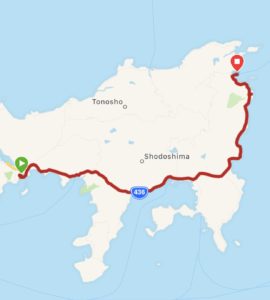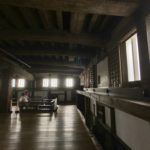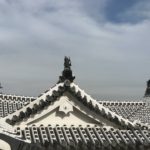Tonosho to Himeji (33 km bike and 47 km ferry)

Soon after leaving Tonosho, we stopped at “Mother’s” again for brewed coffee, toast and that very good orange spread. The ride from there to Fukuda was great, although increasingly hilly around the coast (except for one long tunnel with a separate bike lane), which meant we would be cutting it close to make the planned 11:40 ferry. This wasn’t a problem, as the ferries run every two hours, but, of course, it became a challenge! A couple of kilometres from Fukuda, we decided that we had missed that sailing, but as we rounded the last corner and sped down towards the harbour, the boat was still there. We motioned that we wanted to board and Paul ran to get tickets, with 3 minutes to go before departure! After we cleared the ramp, it was raised and we left! It was a pleasant 1 hr 40min ride to Himeji and then an easy 6 km bike to our hotel.
The most impressive aspect is the wooden construction, built on top of stone foundations. The castle was extensively restored in the 20th C, owing to some subsidence from the 6000 tonnes (6 million kg) structure. We climbed (carrying our shoes as required) five storeys to the top from where there is a commanding view of the city.
Wildlife Note: wild monkeys crossed our path and barked at us on the road near Fukuda.








